 I’ve recently had the distinct pleasure of interviewing a very talented nature and landscape photographer from the picturesque state of New Hampshire. His name is Michael Blanchette and his goal is to produce images that soothe the viewer’s mind with all the beauty nature has to offer. With a true appreciation of the ever-changing light in the environment, Michael prefers to photograph the landscape at the edge of day and night. As you browse through his photos below, I think you’ll agree that he’s quite accomplished at his craft.
I’ve recently had the distinct pleasure of interviewing a very talented nature and landscape photographer from the picturesque state of New Hampshire. His name is Michael Blanchette and his goal is to produce images that soothe the viewer’s mind with all the beauty nature has to offer. With a true appreciation of the ever-changing light in the environment, Michael prefers to photograph the landscape at the edge of day and night. As you browse through his photos below, I think you’ll agree that he’s quite accomplished at his craft.
Michael, thank you so much for sharing your experiences with us and thank you so much for all your thoughtful responses. You have given the readers an opportunity to glimpse into the mind of a person who truly enjoys what they do.
If you’d like to learn more about Michael and his photography workshops, please visit his website. You can also also follow him on Facebook and Instagram.
Can you please tell the readers a bit about yourself?
Well, if I start from the very beginning, I was born and raised on a small dairy farm in Quebec, Canada. My family migrated to the USA when I was just 11 years old — that’s when I first learned to speak English (entirely French previously).
My entire college education and work experience have been in computer software. My last job was as a co-founder of a small software company based in San Jose, California, where I spent more than 4 years of my life. At the age of 48, I decided to leave the industry and move on to a craft that would enable me to use more of my right brain. That turned out to be photography.
Where do you call home?
I live in southern New Hampshire. I’ve lived in New England most of my adult life, with the exception of the 4 or so years in Northern California. My wife and I have two daughters and several grandchildren, so we have no intention of going anywhere else. From home, I can easily travel and photograph in all New England states.
After browsing through your website, I see that you have built up an extensive collection of wonderful photography. When did you first become interested in photography and how long have you been involved with it?
I’ve been interested in photography since my 20s. When my wife became pregnant with our first child, I used that family milestone as an excuse to get my first “good” camera, tripod, and accessories. Of course, in those days, it was all film. I took a night course in photography to get started and have never shaken the photography bug.
Like most people, I had a very busy work career after college, so I could only photograph on weekends and during family vacations. But that all changed after I left the computer industry in 2001, at which time photography became my primary passion. I’ve done photography more or less full-time for over 10 years now.
Are you satisfied with your choice of getting involved with this industry? Is there anything else you would rather be doing?
I’m very happy doing photography and there’s nothing else I’d rather be doing. I live to take photographs that I like and hope that others will enjoy them as much as I do. I had a successful career so I don’t depend on photography for my sole income. That makes it easier for me to enjoy the whole process without fretting over the financial impact it might have on family.
What is the easiest part of your job?
The easiest part of my job is traveling to beautiful places and experiencing stunning scenery under fabulous conditions. I love to travel and the whole process of capturing nature scenes or landscapes at their best is very rewarding.
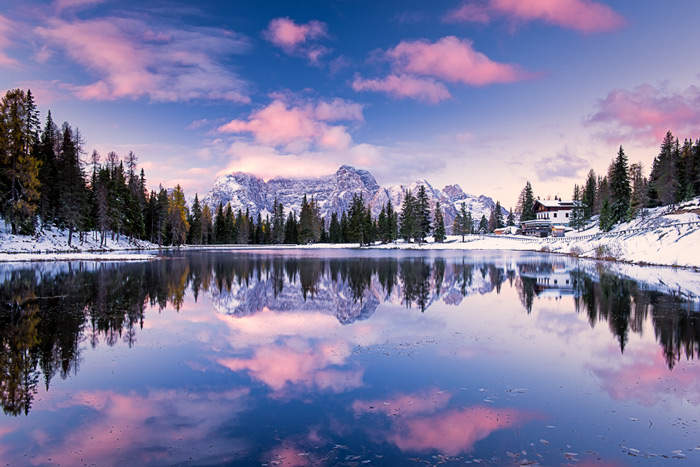
What is the most challenging part of your job?
Planning is the most challenging part of the job. In order to avoid wasting time in the field, I plan every shoot based on a myriad of factors that include weather, moon position, sun angle, tide level, the month of year, and time of day. Before going out on a shoot, I spend a lot of time planning. And even with all the planning, conditions are often wrong by the time I arrive on site. Such is the life of an outdoor photographer.
Locations and weather conditions seem to be a crucial aspect of a successful picture. How do you handle these unpredictable factors?
I use a variety of software tools to determine the best time of year and day to photograph a scene, so I know when a location is most photogenic. A place is usually at its best only at certain times of the year and day. Those tools include The Photographer’s Ephemeris, Google Earth, and Stellarium for planning night shots.
And I use other software tools to predict favorable weather and colorful skies. Those include tools like the National Weather Service, the National Weather Service Radar, and one or more weather forecasting sites such as Intellicast. There’s an art to predicting colorful skies at sunrise and sunset — it involves interpreting the contents of all these forecasts. There’s always risk involved, but a bit of practice increases the odds of predicting the kind of weather conditions that make for a memorable shot.
In regard to marketing, how much of your time do you dedicate to social media? Do you use any special programs or services?
Social media is my only form of marketing. My approach is to post my best work on major social media sites such as Facebook and Instagram and to post regularly. I think posting photos of mediocre quality dilutes a reputation so I only post photos that I really like. I also try to comment on other photos I enjoy — commenting on the work of others is one way to increase your reach and visibility. I probably spend an average of 1-2 hours every day interacting on social media.
I subscribe to buffer.com to post to all my social media sites at once. It allows me to schedule posts days or weeks in advance from a single site.
What is your favorite part of heading out to a new location?
The anticipation of a shoot is always exciting. I try to visualize the image I want before leaving, and then adapt to the conditions when I arrive on location. I learned years ago that rigid expectations are a recipe for disappointment. The ability and willingness to take advantage of the conditions you find in the field are key to making good photos.
How do you keep yourself motivated and your photography fresh?
I stay motivated and excited by photographing a wide variety of geographic locations. New England has a big variety of subjects to photograph, but I also reach out to other parts of the USA (like the southwest), as well as various parts of Europe. It’s easy to feel stuck when photographing a narrow slice of geography, so I make an effort to photograph less familiar parts of the world (at least to me) several times a year.
Over the years, I’ve made close friends who are also photographers and I find the social benefit of traveling with them highly rewarding and socially stimulating.
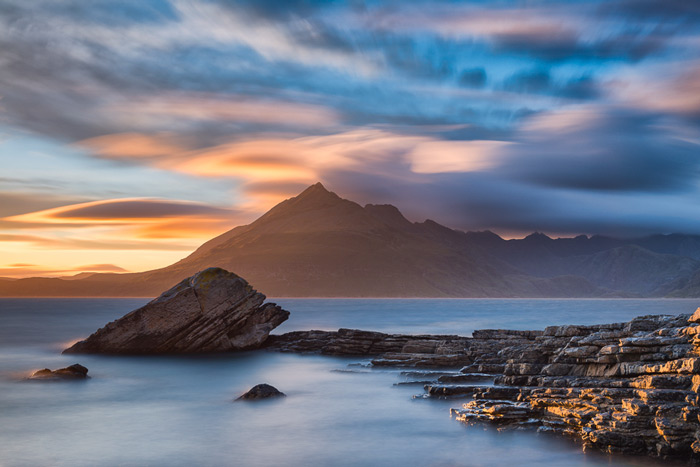
What has been the best source of information along your photography journey (workshop, online forums, classroom, mentor, etc)?
Over the years, I’ve used all possible avenues to learn and perfect my craft as best as possible. I’ve read numerous books, attended many workshops, and rubbed elbows with photographers who I would consider fine mentors. From my experience, photo tours and field workshops are among the best ways to learn photography. Not only did I benefit from the experience of the leader, but I also picked up a lot of practical knowledge from fellow attendees who had different levels of expertise.
What industry sites and blogs do you read regularly? Would any stand out as particularly motivational or inspirational for someone who might be interested in learning about photography?
When I first became serious about photography, I attended a basic photography course and later joined a local camera club that would meet regularly. For someone just starting out, I think a good camera club can be a very enriching experience.
There are numerous online blogs and websites dedicated to photography these days. In fact, the number is so large that it can be downright confusing to decide who to follow. My advice is to find a photographer who creates work that inspires you and then follow that person on social media. There are many great photographers from all over the world — find one whose work touches you and learn as much as possible from them.
There are also good photography publications that you can read. It’s hard to recommend specific magazines because it largely depends on your style of photography. For example, landscape photographers often subscribe to Landscape Photography Magazine or Outdoor Photographer Magazine (online), but the choice of magazine depends on your personal style. There are also great video blogs like the YouTube channel by Thomas Heaton that I find both instructive and entertaining.
What is one piece of advice you would like to offer a new photographer just starting out?
My advice would be to study the work of others, learn from them as much as possible, but avoid comparing yourself to them. There will always be a better photo out there somewhere. Judging your work based on the work of others is a slippery slope that can lead to disappointment and loss of confidence. Feel free to stand on the shoulders of those who have come before you, but strive to put your own spin on the results.
Share with us your favorite image and why.
The very notion of one favorite image is a difficult one. First, I have photos from various parts of the world that are very different from each other. And second, my opinion about photos constantly shifts like the sands of the Sahara Desert. With that caveat, let me mention one of my current favorites.
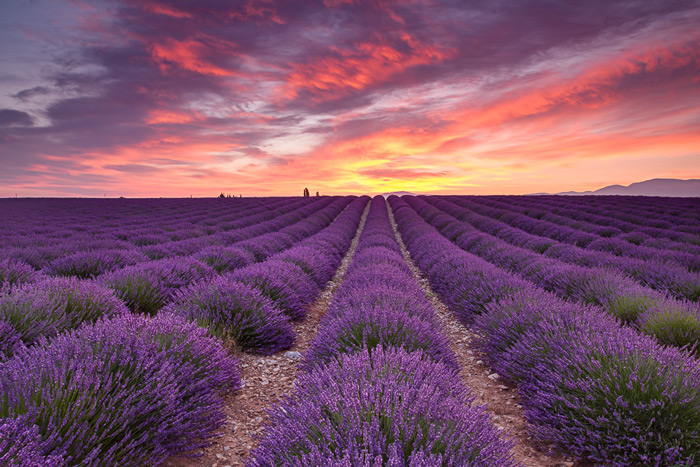
This photo is one of my favorites not only because we had fabulous light and color, but also because of the memorable experience. Two of us went out for sunrise after a very stormy night that included heavy rain and lightning. As we drove onto farmer roads in the early morning hours of July, it was still very cloudy and dark. As we made a turn deep in a lavender field near Valensole, we glanced over our right shoulder to witness the sun begin to light the clouds in a spectacular display. We both jumped out of the vehicle, quickly set up our tripods, and took a few photos. A few moments later, an angry farmer drove up asking what we were doing in his field without permission. The shoot was over and we left quietly, giddy with our results.
What do you hope viewers take away from your images?
The most flattering comment I hear on my photos is “I feel like I’m there”. Whenever I hear that, I know that I’ve touched someone emotionally and managed to draw them into the scenery. That’s the best compliment I could ever get.
What type of camera(s) do you shoot with? What is your favorite lens?
I shoot with Nikon equipment. These days, there are many great camera systems. It just so happens that I started shooting Nikon film cameras years ago, and naturally gravitated to their digital cameras in later years. I currently use a Nikon D850 and have recently purchased the mirrorless Nikon Z7. One thing I love about the Nikon cameras is that they’ve had excellent low-light sensors for many years. I’ve been using Nikon cameras for my night work for a long time with great results. My favorite lens is the Nikon 24-70mm f/2.8 lens — it has the focal length range I use most often. For night work, my favorite lens is the Nikon 14-24mm f/2.8 lens.
What is in your camera bag?
My camera bag remains quite heavy at this time. I hope to reduce the weight over time as mirrorless cameras become mainstream and lighter lenses arrive on the market. If you peeked in my camera bag right now, you’d find the following gear:
Nikon D850 camera body
Nikon Z7 camera body
Nikon 14-24mm f/2.8 lens
Nikon 24-70mm f/2/8 lens
Nikon 70-200mm f/4 lens
Nikon 24mm f/1.8G lens
Nikon 300mm f/4 lens
Nikon 1.4x teleconverter
Lee filter kit with an assortment of filters
Remote cable releases for both cameras
What is your favorite photography accessory?
I own a Really Right Stuff carbon fiber tripod. It’s a key part of my workflow in the field, and I consider it my most important accessory. I do a lot of low-light photography — a solid tripod and ballhead are essential components for getting sharp images.
What piece of equipment would you most like to get but don’t have yet?
I’m pretty happy with my present gear. But if I had to choose, I’d love to get the latest Nikon lenses built specifically for the Nikon Z mirrorless cameras.
How important is Photoshop or other image editing software in your final images?
I use both Lightroom and Photoshop in post-processing. With digital photography and RAW files, post-processing is the equivalent of the old darkroom, so these are crucial tools indeed. You may have a good photo straight out of the camera, but post-processing is where a photographer puts their finishing spin on the image.
I usually apply global changes in Lightroom and then move on to Photoshop for local adjustments and for more advanced processing techniques. For example, I use Luminosity Masks to balance exposure in scenes that involve a high dynamic range. This can only be done in advanced applications such as Photoshop. Given my background in computer software, I love the post-processing phase.
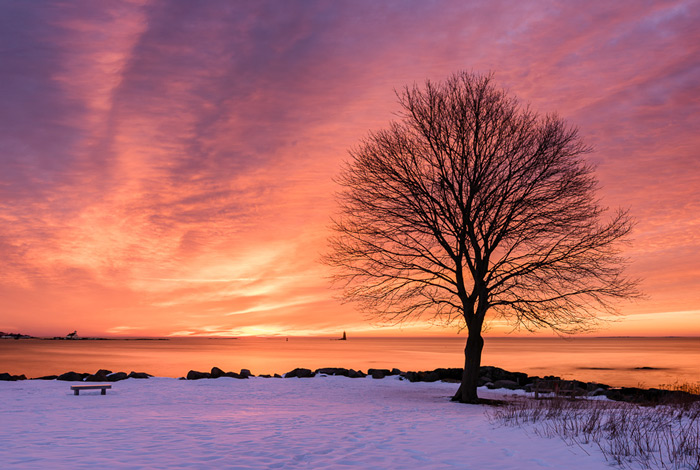
Do you have any projects that make you look back and shake your head? What made the experience so unpleasant?
Capturing a scene at its best usually involves repeat visits and a good amount of patience. My biggest accomplishments involve “getting the shot” with just the right light and under ideal conditions after a number of failed attempts.
Failures? There are many, although photographers rarely boast about these. There have been many occasions when I came back from a planned shoot empty-handed. Sometimes, it’s a whole week or two of non-productive photography. Two years ago, I went to the Pacific Northwest for a few weeks of photography. Unfortunately, there were several major forest fires in the region at the time, and we spent much of the time searching for smoke-free destinations with disappointing results. It happens.
I’m very critical of my own work, so I frequently go back to my website and weed out photos that I no longer consider worthy of publication. Over time, my opinion and taste changes, so last year’s favorites are always at risk of falling out of favor. Time has a way of shifting judgment, so it can be sobering to look back on prior work. I sometimes look back at older photos and wonder what I was thinking at the time. But this is all part of the learning process. Every photographer progresses through similar phases.
What do you think the future holds for you? Where do you see yourself in the next few years?
I have the advantage of not relying on my photography-related income, so for me, the future is bright with new locations and distant travels. I love to travel and have a large “bucket list” of places I still want to photograph. And I usually go back to the same place several times because it’s hard to capture the essence of a place in a single visit.
I’m also conducting photography workshops around New England under a collaborative agreement with another New England photographer. We presently conduct workshops on Cape Cod (Massachusetts), on the Maine Coast, and a fall foliage workshop in Vermont and New Hampshire. I enjoy leading these workshops and anticipate continuing to do so in the future, with possible additions to the list.
Do you see yourself as a photographer many years down the road?
For many of us, photography is a lifestyle and a form of self-expression. So yes, I expect to continue traveling wide and far and taking photos for as long as my health enables me to persist. I know several professional photographers who plan to “retire” from their hectic workload in the future, but admit that they could never stop photographing. It’s in the blood. I share that sentiment.
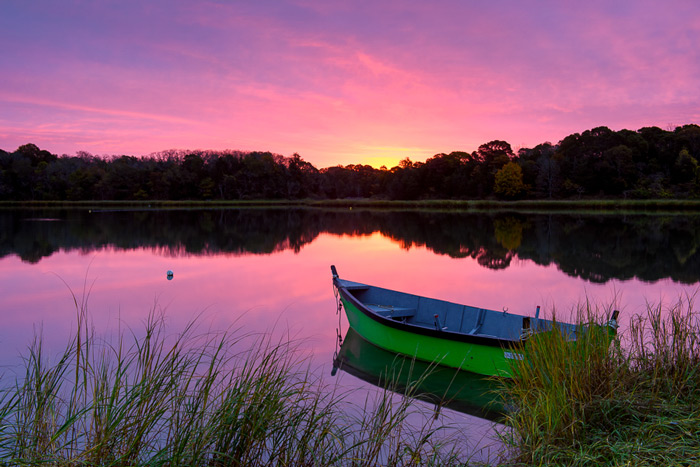
I’m so happy to read your story. I’ve admired your work for a long time and save many of the photos you post on Facebook. My son has also gotten into photography and he seems to focus on animals and birds and has gotten some wonderful pictures in the wild.